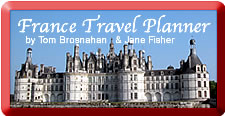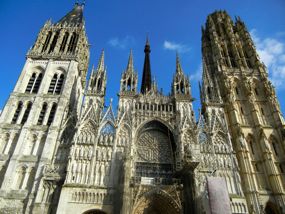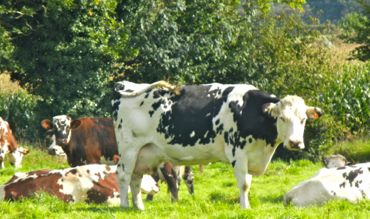 |
Normandy, France Guide | |
| Northwest of Paris, Normandy is a diverse and fascinating region of France with medieval towns, posh summer resorts, the D-Day invasion beaches, enchanting Mont Saint-Michel—and, of course, good food. | ||
|
|
|
Normandy celebrated its 1100th birthday in 2011. That's a lot of candles. Even before 911, when the first Duke of Normandy was named, the region was occupied by the Romans and the Vikings. William the Conqueror waged his battles in the 1000s, and many others fought for Normandy over the centuries. More recently, Normandy became known for its important role in World War II. The beautiful countryside features green rolling hills, forest copses, picturesque villages with stone and half-timbered houses, lush apple orchards and dairy farms. Just a short day trip from Paris, beautiful Giverny lies at the eastern edge of Normandy. Its most famous citizen, Claude Monet, also worked in the historic city of Rouen, with its impressive cathedral and half-timbered architecture. On the western edge by the sea is the world-famous Mont St-Michel, with its abbey, spectacular location, and extreme tides. There's lots to see throughout Normandy. Basse-Normandie, or lower Normandy includes the charming seaside town of Honfleur, with its lovely port; the 19th century coastal resorts of Deauville and Trouville; the large city of Caen, substantially destroyed during World War II but rebuilt to be a center of the region; and Bayeux, home of the 11th century Bayeux Tapestry that tells the story of the Norman Conquest and William the Conqueror. Reminders of the D-Day Normandy landings are everywhere. Visitors flock to Normandy to see the D-Day battle sites and war cemeteries. Cherbourg, famous because of a 1960s movie starring umbrellas and Catherine Deneuve, now has a fine maritime museum, and car ferries to England and Ireland. The area known as Haute-Normandie, or upper Normandy, stretches from Le Havre up the coast, and inland to include Rouen and Vernon/Giverny. It includes some beautiful seaside towns, such as Fécamp (home of Bénédictine liqueur), Étretat, and Dieppe. Although not technically in Normandy, Calais often serves as an entry point for visitors to Normandy. Normandy is also known as a center of good eating in France. Contented cows provide the oft-praised butter and cheese, including Camembert and Pont L'Évêque, that are a staple of the Norman diet. Near Mont St-Michel, sheep graze on the salt marshes, producing succulent lamb, and the Bay of Mont St-Michel is known for its mussels. And don't forget the apples! Some go into apple tarts and purées, and a lot become liquid: delicious sparkling cider and Calvados. History, nature, art, good food and drink—Normandy has it all. It's a great place to spend a few days or a week.
|
|
Above, Mont St-Michel, one of the
|



